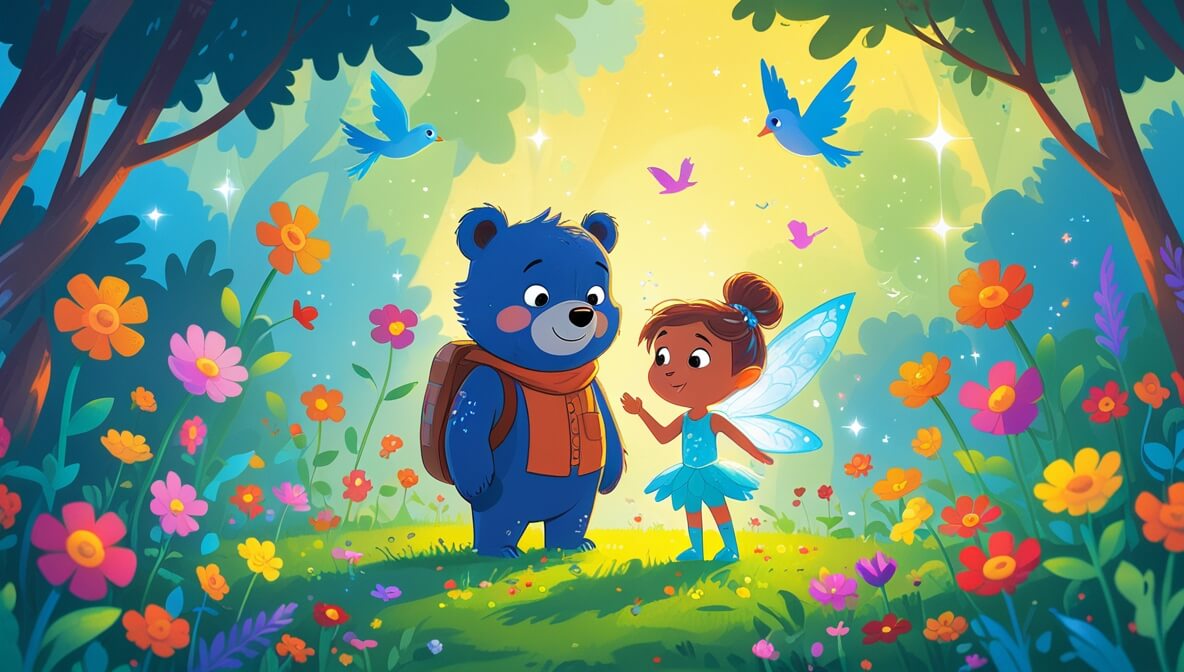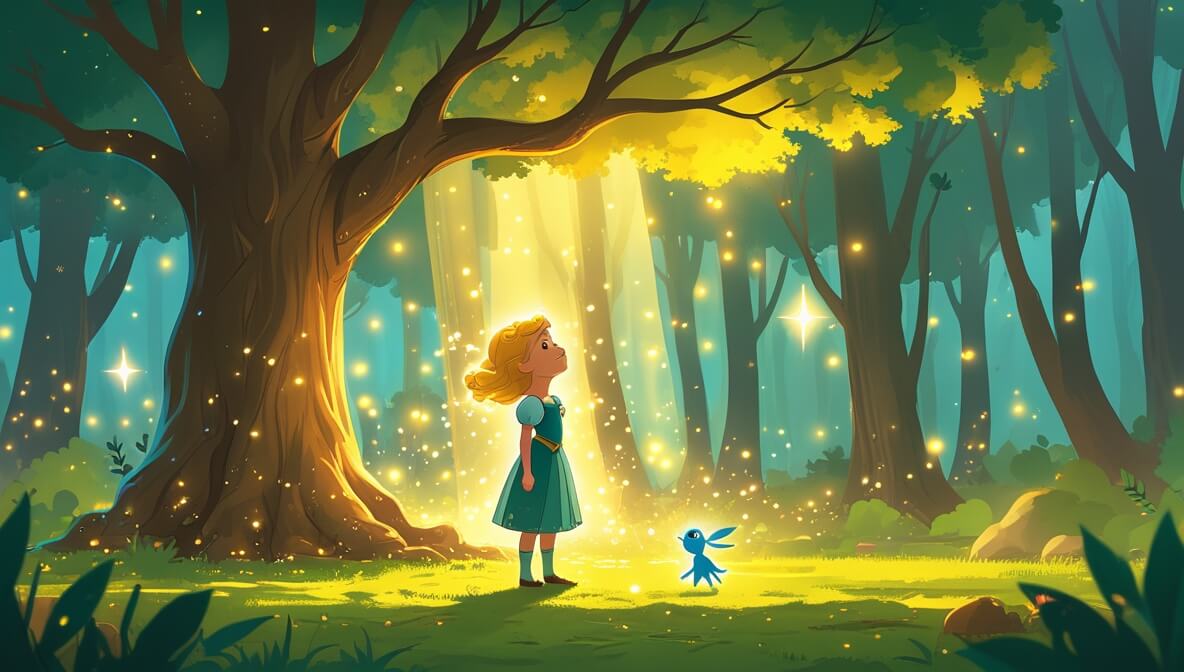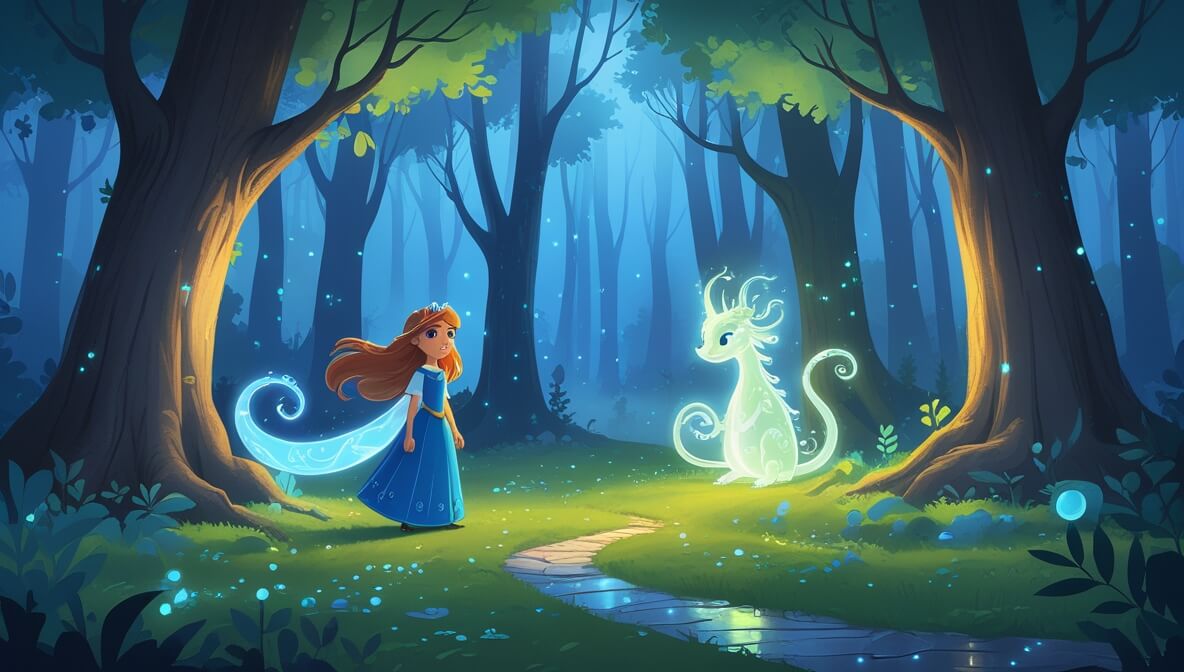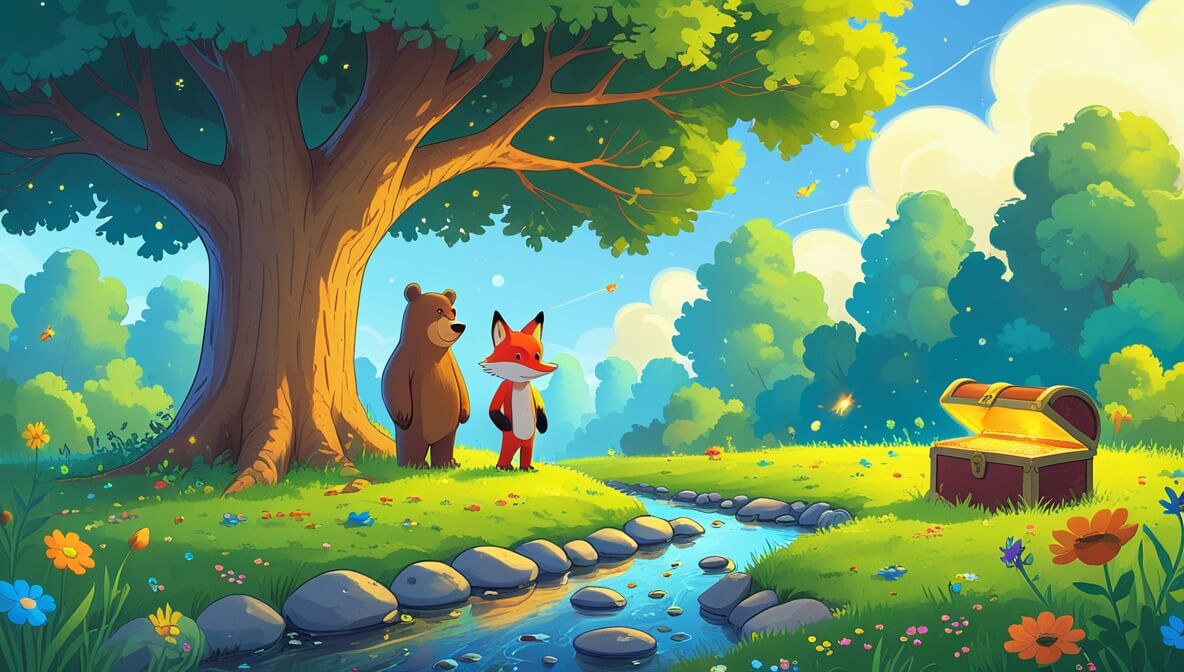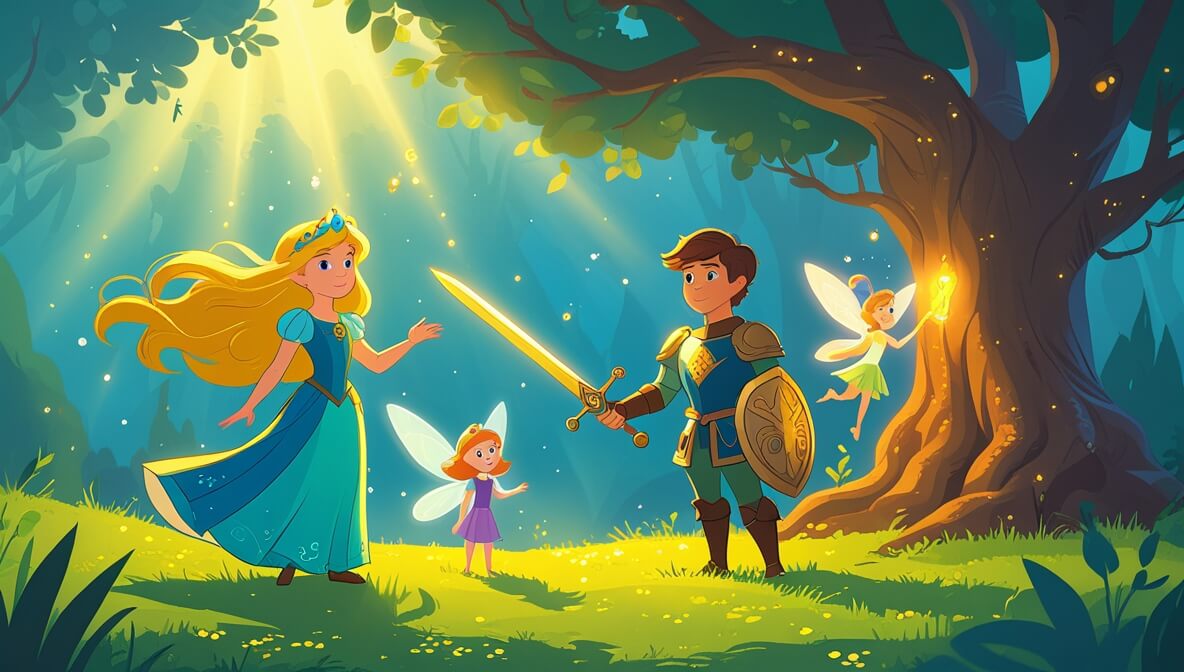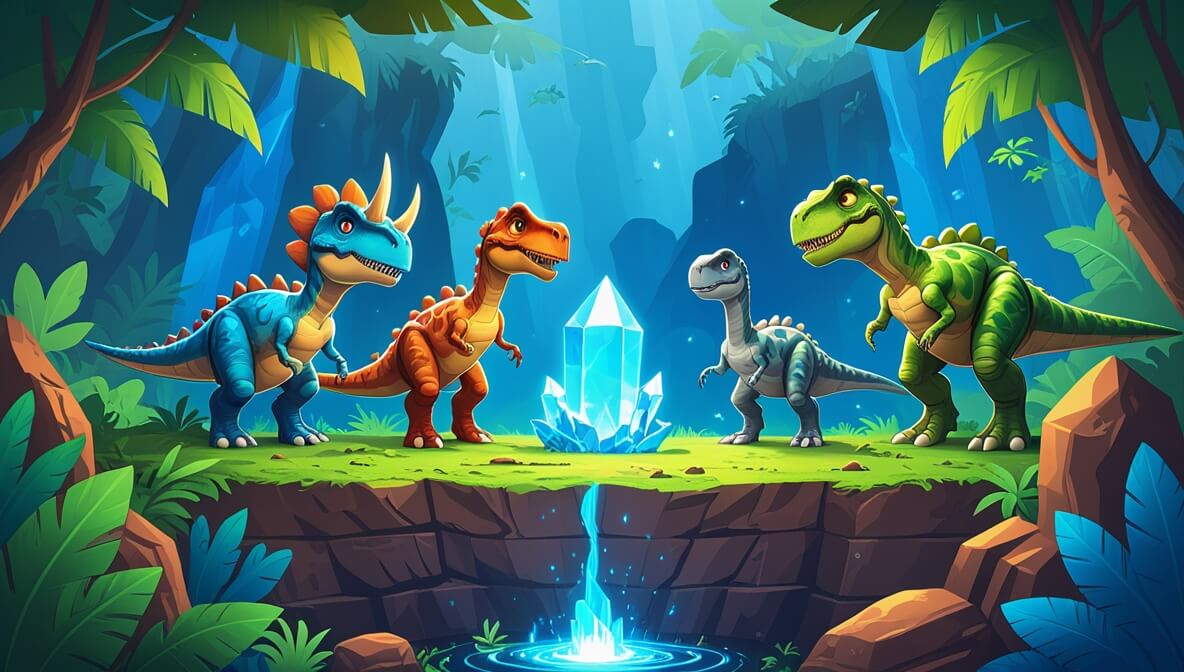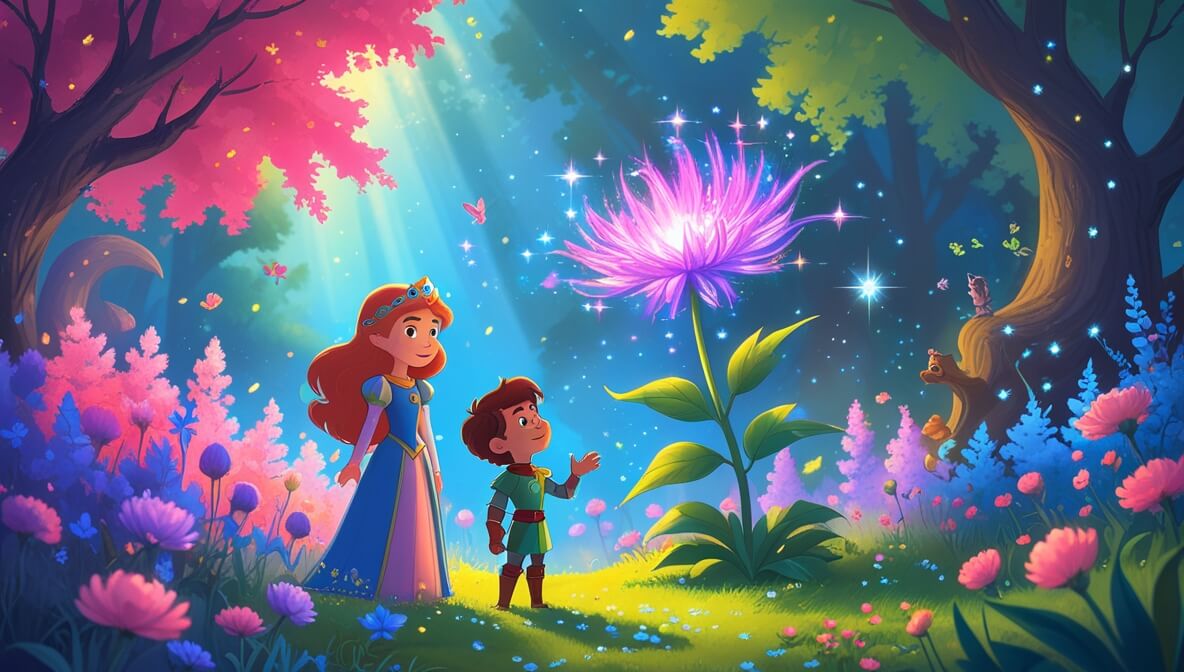A little bear named Bruno discovers a magical garden in his backyard. There, he learns the true meaning of friendship and kindness.
Age Recommendation
0 – 4 years
Characters
Characters:
- Bruno (a curious and friendly little bear)
- Twinkle (a sparkling fairy who loves to help)
Story
Once upon a time, in a cozy little house, lived a bear named Bruno. One sunny morning, Bruno noticed something shimmering in his backyard. Curious, he went to take a look.
The Sparkling Discovery
Bruno found a magical garden hidden behind the bushes. Flowers of every color danced in the gentle breeze. In the center of the garden stood a small, sparkling fairy named Twinkle.
A New Friend
Twinkle flew over to Bruno and said, “Welcome to my secret garden! Here, the plants and animals are our friends.” Bruno was delighted and promised to help Twinkle take care of the garden.
Helping Each Other
Every day, Bruno and Twinkle would water the plants and sing songs with the birds. The garden became a place full of laughter and joy. Bruno learned that being kind and helpful made everything better.
One day, Twinkle said, “Thank you for being such a wonderful friend, Bruno!” Bruno smiled and realized that friendship was a beautiful gift.
The end.
Moral of the Story
The story teaches us that friendship and kindness can make the world a better place, and helping others brings joy to everyone involved.
Questions to Think About
- What did Bruno find in his backyard?
- Who did Bruno meet in the magical garden?
- How did Bruno help Twinkle?
- Why is it important to be kind to others?
- How can you be a good friend like Bruno?
Do You Know
- Fairies are often found in stories as magical creatures who love nature and helping others.
- Gardens can have many different types of flowers and plants, each with their own colors and smells.
Word Explorer
- Magical: Something special and full of wonder.
- Shimmering: Shiny and bright, like light dancing on water.
- Friendship: A special bond between people who care for each other.
Emotions in the Story
- Curiosity: Bruno felt this when he saw something shimmering in his backyard.
- Happiness: Bruno felt happy when he and Twinkle sang with the birds.
- Gratitude: Twinkle felt grateful for Bruno’s help in the garden.
Color Your Scene
Imagine Bruno and Twinkle in the magical garden, surrounded by colorful flowers and playful birds. Draw the garden with bright colors like pink, yellow, and blue, and don’t forget to add sparkles for Twinkle!
Parents’ Corner
This story is a wonderful opportunity to teach young children about the values of friendship and kindness. You can discuss with your child how Bruno and Twinkle worked together to make the magical garden a happy place. Encourage them to think of ways they can be kind to their friends and family. Highlight how small acts of kindness, like helping with simple tasks or sharing toys, can make a big difference in someone’s day.

